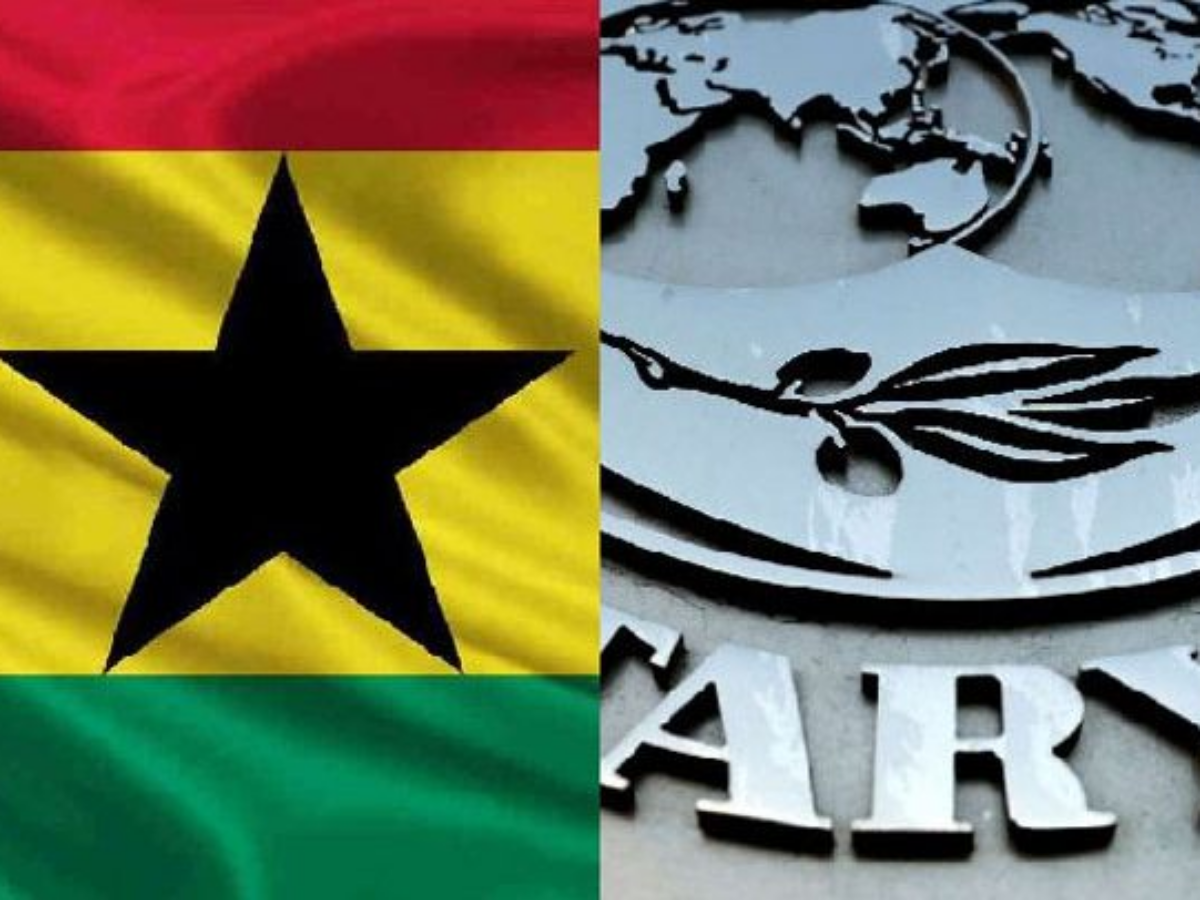
Ghana’s 17th financial bailout from the International Monetary Fund (IMF) since 1966 was outdoored amidst much fanfare by Ghanaian and Fund officials in Washington, DC, in May 2023. Upon careful scrutiny, however, the programme looks more like a roadmap back to the Fund than a genuine effort to end Ghana’s recurrent and shameful dependence on IMF bailouts. The 2023-2026 programme is almost certain to suffer the same fate as previous ones because it is based on the same witch’s brew of Fund self-interest, flawed analyses, and a toxic blend of policy prescriptions that defy logic – like raising taxes and interest rates to “revitalise” a sick economy.
To quote Madam Akua Donkor, the illiterate and regular contender for the presidency, “If with all your education, this is the best you can do for Ghana, then I can’t do any worse as a president.”
A poisoned chalice
A major weakness of the programme is the Fund’s self-preservation rule that requires that countries seeking bailouts must continue to service their debts to it during negotiations and through any programme implementation; no defaults allowed. While this may seem like a sound decision to protect the Fund’s financial capacity to help others, it also restricts it to a programme period of only 3-4 years, with costly and irrational conditionalities that hinder the ability of weak economies to recover sustainably from their crises over a longer period. These economies may rise but fall again sooner rather than later. Such has been Ghana’s IMF story since 1966.
To ensure against default in the current programme, the Fund insisted on what it artfully describes as “large and frontloaded fiscal consolidation”, which forced the government to impose a rash of tax and tariff increases in exchange for the $600 million down payment on the $3 billion bailout. For businesses and consumers, this amounts to a poisoned chalice with lethal consequences beyond three years.
The Covid profiteers
As if higher taxes and tariffs were not enough, the Fund also insists that the Bank of Ghana should “tighten monetary policy” (that is, increase the cost of credit) in order to somehow reduce inflation. But the Fund also concedes that this kamikaze approach to fighting inflation in Ghana doesn’t work. It then blames a “surge in global energy and food prices”, but that alone cannot explain why Ghana, out of 54 countries, has the third highest inflation in Africa (after Sudan and Zimbabwe), whilst Liberia, which suffered from Ebola before Covid, and faced the same global forces, has an inflation rate of only 8.3%. The inflation rate in the Ivory Coast is 5.2%; Burkina Faso, -0.3%; Togo, 5.8%; and Ghana, 42.2%. (At 29.5%, Ghana also has the second highest interest rate in Africa, proving the “kamikaze theory” that higher interest rates don’t necessary lead to lower inflation).
The Fund grabs more straws, blaming “the lingering impact of fiscal and monetary stimulus during the pandemic, exchange rate depreciation, and large monetary financing of the government….” Besides confusing cause and effect, this blame-game overlooks the fact that the real beneficiaries of this “stimulus” were not the government or Ghanaians, but the Covid profiteers. They turned the crisis into an orgy of procurement fraud that might have harmed the Ghanaian economy more than Covid did. Their sudden surge in wealth (which they openly flaunted at the height of the crisis) triggered the classic inflation of “too much money chasing too few goods”, which spooked the cedi, dislocated the economy, and sent it into a death spiral. (Every percent increase in inflation must be offset by an equal depreciation in the cedi to make Ghana’s exports competitive, which can create a vicious cycle, which is what happened).
Government’s pledge in the current programme to “follow up on the Auditor General’s recommendations [on Covid expenditures investigation], including by preparing new guidelines for Emergency Expenditure Management” appears insincere. After all, it refused calls by Ghanaians to audit the Covid expenditures until the IMF made it a conditionality. If it was truly sincere, it would launch an immediate prosecution of the profiteers and retrieve the stolen billions, plus interest. Anything less will endanger the programme.
Dubious ratios, fuzzy targets, and dodgy peers
The programme is full of indicators of progress based on GDP, such as deficit, wage, revenue, and debt ratios. They’re impressive but often unreliable, especially for a country like Ghana that regularly recalculates or rebases its GDP and always ends up with a bigger GDP. That reduces the ratio. In the 2015 IMF programme, for example, the wage/GDP ratio was said to be about 7%, until the 2018 rebasing slashed it to just over 5%, making nonsense of all other GDP-based ratios that were used in 2015. Another rebasing in the future will almost certainly render the 2023 ratios (and their policies) equally worthless. There are better ratios, but they’re only minimally used in the programme.
Other targets are no better. For example, the programme will be considered a success if debt/GDP ratio falls from 98.1% in 2023 to 88.4% in 2026. But that would take us back to 2022, when the ratio was 88.1%. Worst, debt/GDP ratio only measures a country’s potential to manage its debt, not its capacity to finance it, which requires sustained economic growth and efficient tax administration. The programme undermines these.
Perhaps the most shocking target of all is the 3-month import cover projected by 2026. This low threshold will still make Ghana vulnerable to financial and economic shocks just as it always has. For an import-dependent and fragile economy like Ghana’s, the National Development Planning Commission in 2016 had proposed a minimum of 10 months’ import cover under the 40-Year Plan, which should have started in 2018. That plan was supported by 25 strategic growth sectors chosen for their resilience, export potential, job-creation capacity, and of course revenue generation potential, among others.
Government-funded schemes like “You Start” and MASLOC, supposedly meant to promote “entrepreneurship”, are always hijacked by special interests and never work. They only drain the fiscus.
To justify its controversial push for higher taxes, the Fund also compares Ghana’s revenue/GDP ratio to what it calls Ghana’s “peers”, including Somalia, South Sudan, Benin, Cameroon, Papua New Guinea, and Rwanda. That was self-evidently preposterous. The appropriate peers should have been Ghana’s fellow lower middle-income countries, and that would have shown that the annual average revenue/GDP for Ghana has been higher than the middle-income average since 2008, despite what is claimed in Ghana Cares. (International trade taxes, as a share of tax revenue, are also higher in Ghana than the lower middle-income average). The problem, therefore, is not low revenue but high wasteful spending by the government, as reflected in the finance minister’s insistence that he would still build a gratuitous cathedral that may well cost over $500 million – whilst Ghana is still on bended knees The IMF is implicitly financing such insanity.
The elephant in the room (and in power)
In the mid-1960s, a government budget described Ghana’s civil service as a “life of well-paid idleness”, referring to the bloated payroll and the little work done. Not much has changed since. In 2008, the World Bank concluded in a 17-country study that Ghana had more than twice the number of workers, as share of the general population, on its government payroll, compared to the group average. Not surprisingly, it also had the lowest civil service wages, and still does.
But that has not stopped politicians from piling on the payroll and boasting about it. In 2021, an MP posted a picture of five young men that he had enlisted into the Ghana Police Service. The following year, the finance minister proclaimed to Parliament that government had employed 300,000 people since 2017, a 60% increase. Not to be left out of the fun, the vice president recently claimed that government had created over 2 million jobs since 2017, almost all of them in the public sector. (His evidence included one (1) job created at the headquarters of the Museums Board in 2022 – without adjustment for retirement and departure of other staff).
Smoke-and-mirror antics like this by public officials ignore the risks that this elephant in the room poses as it runs amok and destroys the prospects of better-paying jobs in the private sector, which would mean higher taxes and higher government revenue. From 2008 to 2022, for example, the government’s wage bill exceeded budget every year by an average of 8.8%. Over the same period, tax revenue fell short of target by an annual average of 3.1%, whilst capital spending, crucial to economic growth and job creation, fell below target by an annual average of 2.7%. Such systemic overconsumption and disinvestment spells doom for any economy.
Overall, however, a structurally deficient (and mismanaged) post-colonial economy like Ghana’s, where the informal sector accounts for nearly 90% of businesses, about 80% of workers and only 26% of GDP – due to low education, low skills, low investments, poor infrastructure, and endemic corruption, all of which keep output, incomes and revenue low in the sector – can never be developed through short-term IMF programmes. This has been the case for 57 years, and it’s unlikely to change in the next three.
Rhetoric meets reality
What Ghana needs is economic transformation, with lots of private sector jobs. But the government’s approach to transformation looks more opportunistic than a committed effort. Ghana Beyond Aid, one pillar for its purported transformation agenda, depends on more aid from donors to achieve its objective, prompting the Dutch ambassador to cheekily propose Ghana Beyond Corruption as an alternative. The government didn’t like it. The other pillar, Ghana Cares/Obaatan Pa – which is the framework for the latest IMF programme and the basis for mobilising more foreign aid – does not even make a passing mention of Local Economic Development (LED), the basis of economic transformation, since local economies constitute the building blocks of the national economy. The reality clearly does not match the rhetoric, and the future looks bleak, irrespective of the IMF programme. Long before Covid, in November 2019, the finance minister had told Parliament (in the 2020 budget) that GDP growth would decline from 7% in 2019 to 4.6% in 2022, before picking up to 6.5% in 2023, still less than the “double digit” growth that the government had promised. The underlying factors for that grim prediction remain the same, and the latest Fund programme does little to address them permanently.
Beware, the fire next time!


